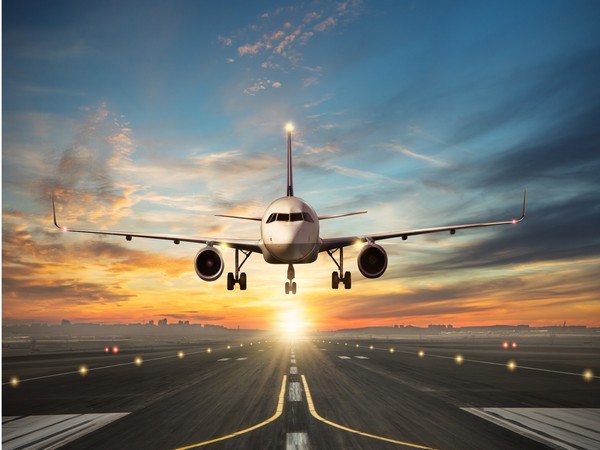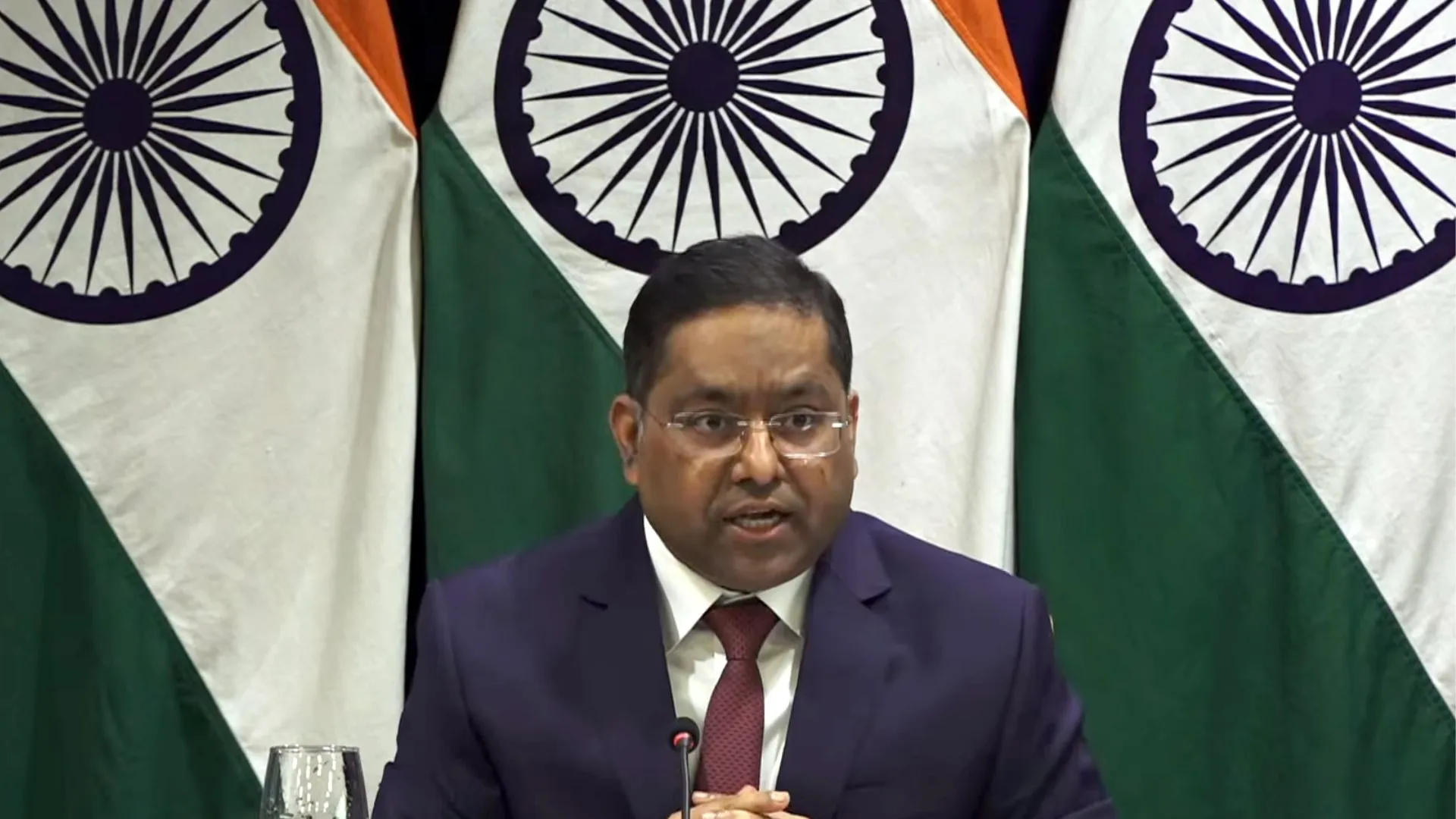India’s aviation industry is taking flight like never before, soaring to unprecedented heights and leaving an indelible mark on the global aviation landscape. From being a luxury confined to the wealthy few in the early 2000s, air travel in India has undergone a remarkable transformation, evolving into an accessible and preferred mode of transport for millions across the nation. Today, India stands tall as the third-largest domestic aviation market worldwide, trailing only the aviation giants of the United States and China.
The prestigious credit rating agency Crisil has painted a promising picture for the Indian aviation sector’s future. Its recent report predicts that Indian airlines will significantly boost their share in the country’s international passenger traffic, with estimates suggesting a staggering surge of 700 basis points by the fiscal year 2028. This growth will propel their market share to an impressive 50%, up from a substantial 43% in fiscal year 2024. Crisil further forecasts that Indian carriers will achieve an outstanding compound annual growth rate (CAGR) of 14-15% in the international segment over the next four fiscal years, solidifying their position as formidable players in the global aviation market.
This substantial growth is fueled by a multitude of key factors, including the strategic addition of fleet capacity, the introduction of new routes, and the operation of direct flights to key destinations across the globe. Indian airlines have been proactively expanding their international footprint, adding an impressive 55 new routes in just the past 15 months. These new routes include direct flights from additional Indian cities to popular destinations in the United States, Europe, and Australia, significantly reducing travel time and eliminating the need for layovers, providing a seamless and convenient travel experience for passengers.
Moreover, Indian carriers have been leveraging strategic codeshare agreements with major global airlines, offering seamless onward connectivity and enhancing their competitiveness in the international market. They also hold a natural advantage over foreign carriers, with superior domestic connectivity and the ability to provide end-to-end international connectivity on a single ticket, even for travelers from Tier 2 and Tier 3 cities across the vast Indian landscape.
Crisil’s report also sheds light on a notable shift in spending patterns post-pandemic, with an increasing inclination towards international leisure travel among Indian consumers. Manish Gupta, Senior Director and Deputy Chief Ratings Officer at CRISIL Ratings, attributes this trend to a confluence of factors, including “Increasing disposable incomes, easing visa requirements, growing number of airports, and enhanced air travel connectivity.”
The Indian government’s unwavering commitment to nurturing the aviation sector has played a pivotal role in its success story. One of the key initiatives driving this growth is the Regional Connectivity Scheme – Ude Desh ka Aam Nagrik (RCS-UDAN), launched in 2016. This visionary scheme aims to provide connectivity to unserved and underserved airports across the country by reviving existing airstrips and airports, fostering regional development and unlocking new growth opportunities.
The progress of RCS-UDAN has been nothing short of remarkable. As of December 4, 2023, a staggering ₹4,500 crores have been allocated for airport development under the scheme, with ₹3,751 crores already utilized. 517 RCS routes have started operations, linking 76 airports, which include 9 heliports and 2 water aerodromes. This initiative has benefited over 1.3 crore people, and the Budget 2023-24 has allocated ₹1,000 crore for the revival and development of 50 additional aerodromes, further strengthening the nation’s air connectivity.
The proactive infrastructure development spearheaded by the government has been a catalyst for growth in the aviation industry. The number of operational airports in the country has doubled from 74 in 2014 to 148 as of April 2023. Moreover, the government plans to develop and operationalize an additional 220 airports in the next five years, further enhancing air connectivity across the vast expanse of the nation.
The aviation industry is experiencing a remarkable resurgence post-Covid, fueled by a surge in passenger demand. From January to September 2023, domestic airlines carried an impressive 112.86 million passengers, a staggering 29.10% increase compared to the same period in 2022. International passenger traffic also witnessed a significant 39.61% increase, with airlines carrying 45.99 million passengers between January and September 2023, reflecting the industry’s robust recovery and the growing appetite for air travel among Indians.
In a historic move that underscores the industry’s growth potential and the government’s commitment to its development, Air India signed a landmark deal with aviation giants Boeing and Airbus on February 14, 2023. This deal, worth an unprecedented $70 billion, involves the purchase of 470 aircraft, marking the largest order in aviation history. This milestone order, Air India’s first since 2005, comes at a time when the Indian aviation industry is witnessing a surge in passenger traffic and is poised for unprecedented expansion.
Amidst this remarkable growth, the Indian aviation sector is actively pursuing sustainability initiatives to reduce its carbon footprint and promote responsible aviation practices. The Ministry of Civil Aviation (MoCA) has taken steps to standardize the Carbon Accounting and Reporting framework for Indian airports, encouraging airport operators to map carbon emissions and work towards carbon neutrality and net zero emissions in a phased manner.
Several major airports, including the prestigious Delhi, Mumbai, Hyderabad, and Bengaluru airports, have achieved the coveted Level 4+ Airports Council International (ACI) Accreditation, becoming carbon neutral. Additionally, a remarkable 66 Indian airports are operating on 100% green energy, highlighting the industry’s commitment to environmental sustainability and aligning with global efforts to combat climate change.
While the Indian aviation sector is soaring to new heights, it is not without its challenges and constraints that need to be addressed. The year 2023 witnessed a mixed bag of highs and lows, with domestic fliers breaking pre-Covid records and record orders for new aircraft, contrasted with the bankruptcy of Go Air and operational and financial struggles faced by other carriers like IndiGo and SpiceJet. IndiGo, one of the largest carriers in the Indian market, faced engine issues that grounded a sizeable number of planes, adding woes to both operations and finances. SpiceJet continued to grapple with a myriad of financial and legal troubles, though it managed to survive through these turbulent times. Akasa Air, the newest entrant to the Indian aviation market, faced challenges in attracting and retaining pilots, highlighting the industry’s need for a skilled workforce to support its rapid growth.
Additionally, the Indian aviation sector faces constraints related to infrastructure development, airport capacity, and air traffic management systems. While the government has ambitious plans to develop and operationalize 220 new airports in the next five years, the pace of infrastructure development needs to be accelerated to keep up with the surging demand for air travel. Furthermore, existing airports in major cities like Delhi and Mumbai are operating at near-maximum capacity, necessitating expansion and upgradation to handle the increasing passenger traffic.
The availability of skilled personnel, including pilots, air traffic controllers, and maintenance staff, is another challenge that needs to be addressed. As the industry continues to grow, the demand for skilled aviation professionals will increase, requiring concerted efforts in training and skill development programs.
However, these challenges also present significant opportunities for growth, innovation, and industry consolidation. With over 1,000 new aircraft already ordered and plans to expand the fleet to more than 2,000 aircraft within the next decade, the Indian aviation industry is poised for unprecedented expansion. This growth will not only cater to the burgeoning domestic demand but also position Indian carriers as formidable players in the global aviation market, competing with the best in the world.
According to the Ministry of Civil Aviation’s ‘Vision 2040,’ air passenger traffic is expected to increase sixfold to an astonishing 1.1 billion, including 821 million domestic and 303 million international passengers. Additionally, air cargo movement is projected to quadruple to 17 million tons by 2040, presenting immense opportunities for logistics and e-commerce sectors, further fueling the growth of the aviation industry and the broader Indian economy.
The Indian aviation sector is truly taking flight to new horizons, driven by robust growth, supportive government policies, and a commitment to sustainability. With proactive infrastructure development, increased air connectivity, and a surge in passenger demand, the industry is poised to cement India’s position as a global aviation powerhouse, leaving an indelible mark on the international stage.
To fully capitalize on this potential and overcome the constraints, it is crucial to address operational and financial challenges through coordinated and expedited efforts, fostering an environment conducive to growth and innovation. By nurturing a skilled workforce, embracing cutting-edge technologies, and maintaining a strong focus on safety and sustainability, the Indian aviation industry can soar to unprecedented









